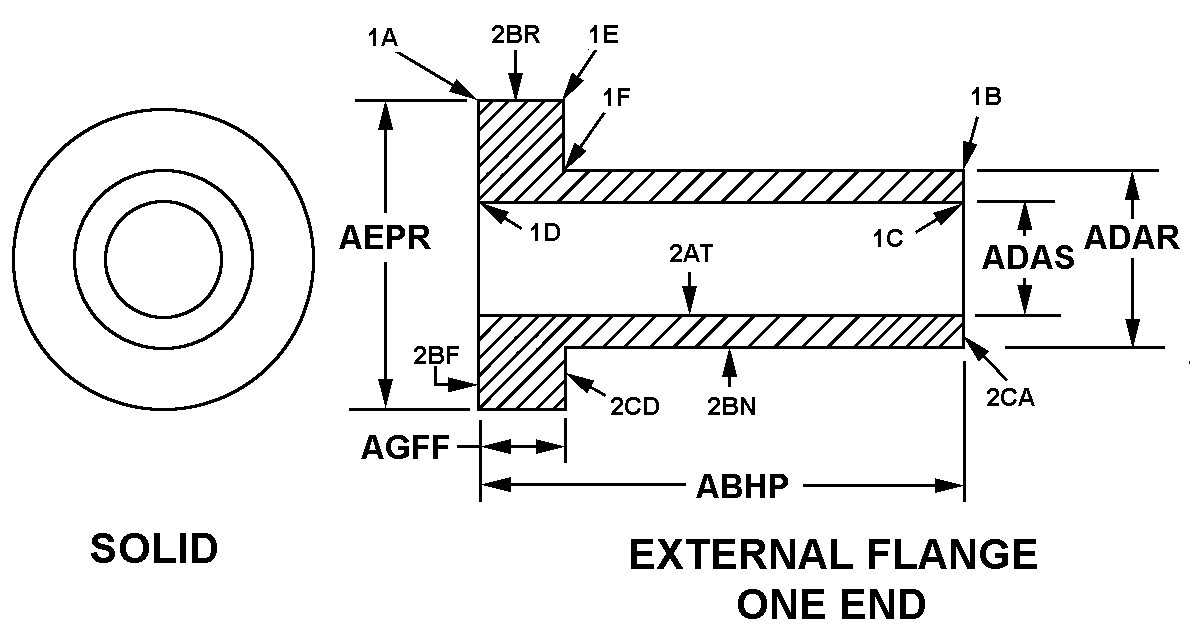3120016291468
Price Quote Get an up to date pricing and availability quote for this product. Order online or over the phone.
Quality Commitment
Serving our customers with quality and safety first.
- AS9120 Certified
- Audited supply chain
- ITAR Registered
- DDTC Registered
- HAZMAT Certified
- Customer service objectives
- Every product 100% inspected

3120-01-629-1468 Specification Set by the OEM (see RNCC code 3)
0.542in. and 0.557in. ⁓9/16"
0.3131in. and 0.3136in.
0.1900in. and 0.1915in.
0.4270in. and 0.4470in.
F-35
0.0570in. and 0.0620in.
undercut left flange body corner
copper alloy 630 or copper alloy 642
solid, external flange one end
80205-NAS77 professional/industrial association standard
Cross Reference Parts Part numbers that meet the specification outlined on this page and set by the OEM
Identification Item Identification Guide (IIG) and Item Name Code (INC)

Definition Definition of approved item name (AIN): "BUSHING,SLEEVE"
A tubular shaped unthreaded item with or without a flange at one end designed to be inserted into a hole to reduce the inside diameter of the hole and to protect the surrounding body structure from damage resulting from stress, strain, and/or vibration. The overall length must exceed 25 percent of the outside diameter or the shortest distance between peripheral flats of the body. Includes items which are divided into two or more segments which includes 180 degrees (3.141 radians) or less of the bearing periphery. For items made of rubber, see bushing, nonmetallic. See also bearing, sleeve; bushing, tapered; spacer, sleeve; insulator, bushing; and bushing, electrical conductor. Excludes bushing, drill, jig.
3120-01-629-1468 Material Hazmat, Precious Metals, Criticality, Enviroment, and ESD
Indicates there is no data in the hmirs and the nsn is in a fsc not generally suspected of containing hazardous materials.
Item does not contain precious metal.
No known electrostatic discharge (esd) or electromagnetic interference (emi) sensitivity.
Represents items with no adp components
The item does not have a nuclear hardened feature or any other critical feature such as tolerance, fit restriction or application.
Identification Codes
HMIC: Hazardous Material Indicator Code. A one position code that identifies a hazardous item.
PMIC: Precious Metal Indicator Code. A one position code which identifies items that have precious metals as part of their content. precious metals are those metals generally considered to be uncommon, highly valuable, and relatively superior in certain properties such as resistance to corrosion and electrical conductivity.
ESD: Electrostatic Discharge. Indicates if an item is susceptible to electrostatic discharge or electromagnetic interference damage. electrostatic discharge damage occurs when an accumulation of static electricity generated by the relative motion or separation of materials is released to another item by direct contact. electromagnetic interference damage occurs when an item comes into proximity with an electrostatic or magnetic field.
ENAC: Enviromental Attribute Code. Identifies items with environmentally preferred characteristics.
CRITL: Criticality Indicator Code. Indicates an item is technically critical by tolerance, fit, application, nuclear hardness properties, or other characteristics.






